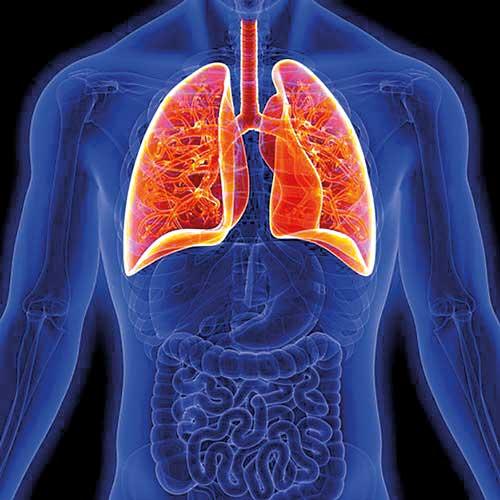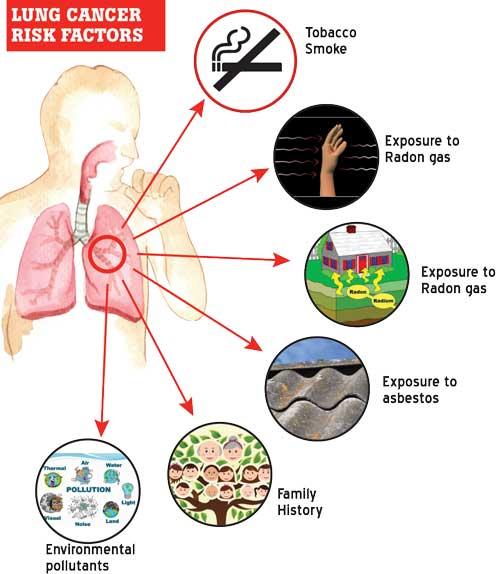20 Nov 2020 - {{hitsCtrl.values.hits}}
 The World Health Organization (WHO) declares cancer as one of the leading causes of death globally. According to the WHO, globally, about 1 in 6 deaths is caused due to cancer and lung cancer is the most common cause of cancer related deaths.
The World Health Organization (WHO) declares cancer as one of the leading causes of death globally. According to the WHO, globally, about 1 in 6 deaths is caused due to cancer and lung cancer is the most common cause of cancer related deaths.
According to Dr. Prasad Abeysinghe, Oncologist and Cancer specialist of the National Cancer Institute, Lung cancer is an abnormal growth arising from tissues of the lung. It is the second commonest cancer among males in Sri Lanka. Although it’s far less common among females a significant number of females are also diagnosed with lung cancer.
Causes/ risk factors
Dr. Abeysinghe said that while smoking is the number 1 cause for lung cancer there are several risk factors that could increases a person’s chance of developing lung cancer.
Tobacco smoke- This is by far the leading risk factor for lung cancer. While primary smokers are at a higher risk of being diagnosed with lung cancer, even second-hand smoking, where nonsmokers inhale fumes cigarette, cigar and pipe smoking have an increased risk of developing lung cancer.
Exposure to Radon gas- Radon exposure is also a leading cause of lung cancer. It contributes to lung cancer in smokers and in people who regularly breathe high amounts of the gas at work (miners, for example).
Exposure to radiation- Exposing oneself to radiation such as X-ray and Gamma radiation frequently also increases the risk of developing lung cancer

Exposure to asbestos- People who work with asbestos (such as in mines, mills, textile plants, places where insulation is used, and shipyards) are more likely to develop lung cancer.
Family History- If a family member has been diagnosed with lung cancer the others in the family run the risk of developing lung cancer
Environmental pollutants- The exposure to environmental pollutants such as arsenic, cadmium, diesel exhaust, gasoline, coal products, etc. can also be considered as a risk factor contributing to the development of lung cancer.
Signs and symptoms
“Most symptoms related to breathing could be a sign of lung cancer,” Dr. Abeysinghe explained. Accordingly, most patients with lung cancer have one or more of these local signs in the strain area:
However, when the cancer is advanced, weight loss can be observed among patients and the cancer may spread to other organs disrupting their functions. If the cancer has infiltrated bones, it may result in bone and joint pain while infiltration of the cancer into the liver may cause yellow discolouration of eyes. In addition, certain lung cancers may induce secretion of chemicals which may cause for other symptoms to appear resulting in Paraneoplastic syndromes.
Diagnosis and treatment
Once the physician suspect lung cancer depending on the patient’s symptoms and risk factors, he or she will order imaging tests to check your lungs for masses. Dr. Abeysinghe said that in most cases a chest x-ray would detect the abnormal growth. “However, some kind of biopsy needs be done to determine whether it’s a cancerous growth and to decide on what type of cancer it is.”

Treatment for lung cancer depends on whether the cancer is in the early or latter stages. “If the patient is diagnosed during early stages surgery offers the best treatment as you can completely remove the cancerous growth,” he explains.
However, most lung cancers are detected in the advance stages and surgery is not an option for most of those patients. For those patients, radiation treatment and chemotherapy injections are possible treatments. In addition, targeted treatment, where medication used can stop or slow down lung cancer drivers, is also available for patients.
Therefore, if a person who runs a significant risk of developing lung cancer displays symptoms of lung cancer he or she should seek the services of a physician immediately; this is because early diagnosis is the key to the best treatment.
Managing lung cancer
The Covid-19 pandemic is slowly reshaping the world. In these challenging times managing lung cancer proves to be more difficult.
As COVID-19 also attacks lung tissue and COVID-19 patients display similar symptoms to a lung cancer patient. This results in many issues in relation to patient diagnosis. “If a lung cancer patient displays signs of breathlessness and fever, those are the exact symptoms that a COVID-19 infected patient may also have. Therefore, it is difficult to differentiate between these two types of patients and we need to carry out specific COVID-19 diagnostic tests on these patients. This is the diagnostic dilemma we currently face,” Dr. Abeysinghe explained.
He opined that lung cancer patients are not at a higher risk of being infected with COVID-19 compared to other people. In fact they are more vulnerable to lung damage in the face of a COVID-19 infection spread. “As cancer patients are generally weak and their immunity is weak, they have a higher risk of facing severe complications due to the presence of COVID-19,” he commented.
These patients fall in the category of a vulnerable population following hence following proper safety precautions and guidelines, as issued by the World Health Organization and the Health Ministry in relation to patients, is vital in managing lung cancer during the COVID-19 pandemic.
21 Dec 2024 3 hours ago
21 Dec 2024 5 hours ago
21 Dec 2024 8 hours ago
21 Dec 2024 8 hours ago
21 Dec 2024 9 hours ago